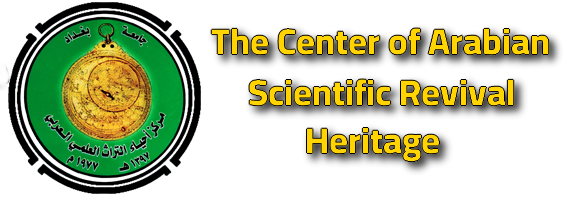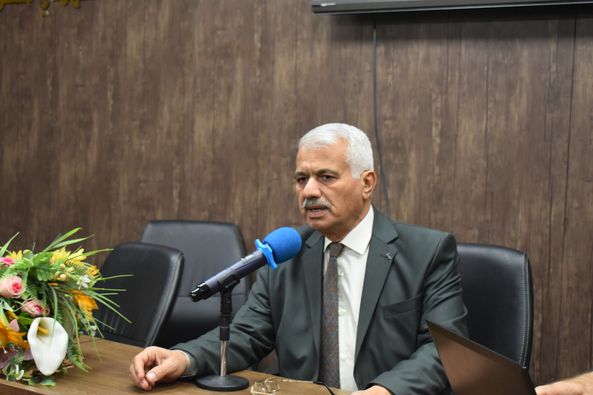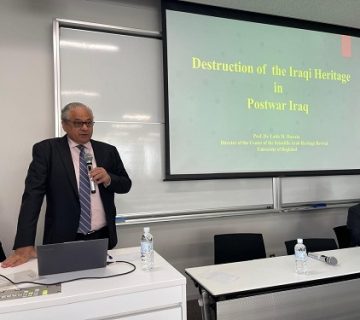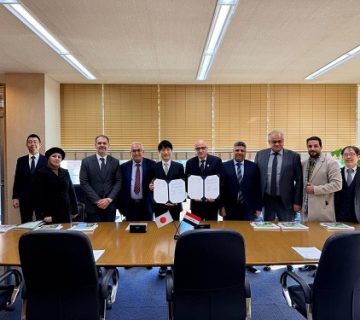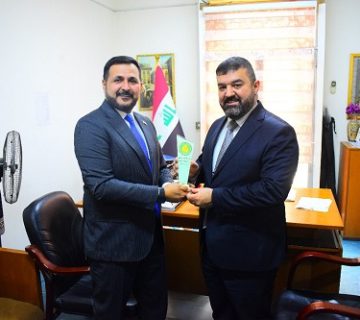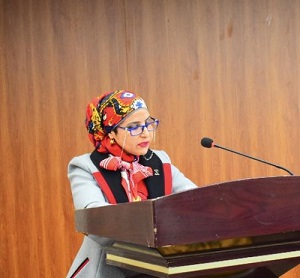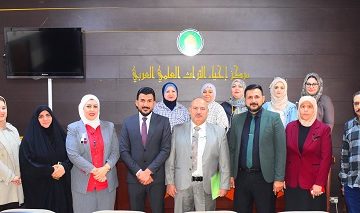Under the supervision of Professor Dr. Alaa Nafi Jassim, Director of the Center, the Center for the Revival of Arab Scientific Heritage at the University of Baghdad organized on Monday morning, 9/4/2023, in the hall of Professor Nabila Abdel Moneim Daoud, and in the presence of a number of professors and researchers, a seminar entitled (Memorial Writings on the Ghadadi Monuments in… Baghdad) The seminar was delivered by Professor Dr. Saadi Ibrahim Al-Daraji, a lecturer at our center, as a speaker.
The buildings in Baghdad were decorated with various memorial inscriptions, some dating back to the Abbasid era and others to the Ottoman era. However, most of these writings have been lost due to age, wars, neglect, and theft, and only a few of them still adorn the facades of some mosques, shrines, schools, and khans. In addition to the tombstones that date their owners in the historical cemeteries of Baghdad, which are truly a treasury of Iraq’s symbols and flags.
There are wonderful examples of memorial plaques written in this script by the hands of great Arab and Turkish calligraphers, which have come down to us from mosques built in Baghdad during the Ottoman era, including, for example, a marble plaque in the Al-Khasiki Mosque in the Ottoman Turkish language that was hung on the facade of the prayer hall. Other elaborate examples include a painting dating to the renovation of the mosque of Sheikh Jamal al-Din Abdullah al-Aquli, the teacher of Mustansiriya, who died in the year (728 AH), and the painting is dated in the year (1095 AH/1683 AD), and many others.
These paintings were written with different types of scripts, the most important of which are Thuluth, Naskh and Naskh Taliq. The latter is a clear script whose letters are distinguished by precision, elegance and extension. Its letters are more malleable in drawing and more flexible, especially if they are drawn with precision, elegance and good distribution. Therefore, it became popular among Arab and non-Arab calligraphers and became their destination. The Ottomans developed it and tried to reform it and make it easier to read, so it emerged in a new form. They called it (Nashq al-Ta’laq), meaning clear commentary. Then the word was carved and became Nasta’liq. In conclusion, the center director thanked the lecturer and wished him continued success
